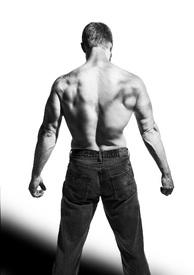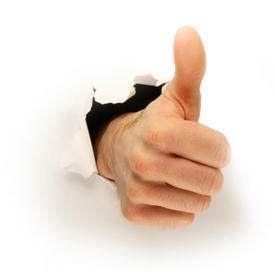Form critique thread, post your videos here.
Options
Replies
-
I agree with SideSteel. The one thing I would add is to be more deliberate with each lift. The last lift seemed to be breaking down (thoracic). I would concentrate on keeping the (scapulae back) chest up before the tension on the bar.
Chest up is fine but I wouldn't retract the scapula.0 -
I agree with SideSteel. The one thing I would add is to be more deliberate with each lift. The last lift seemed to be breaking down (thoracic). I would concentrate on keeping the (scapulae back) chest up before the tension on the bar.
Chest up is fine but I wouldn't retract the scapula.
Are there any other cues besides chest up to prevent thoracic rounding? My friend has rounding at light weights and needs cues to perfect his form. I thought the cue "squeezing scapulae" and "chest up" would help put everything into position.0 -
I agree with SideSteel. The one thing I would add is to be more deliberate with each lift. The last lift seemed to be breaking down (thoracic). I would concentrate on keeping the (scapulae back) chest up before the tension on the bar.
Chest up is fine but I wouldn't retract the scapula.
Are there any other cues besides chest up to prevent thoracic rounding? My friend has rounding at light weights and needs cues to perfect his form. I thought the cue "squeezing scapulae" and "chest up" would help put everything into position.I agree with SideSteel. The one thing I would add is to be more deliberate with each lift. The last lift seemed to be breaking down (thoracic). I would concentrate on keeping the (scapulae back) chest up before the tension on the bar.
Chest up is fine but I wouldn't retract the scapula.
Are there any other cues besides chest up to prevent thoracic rounding? My friend has rounding at light weights and needs cues to perfect his form. I thought the cue "squeezing scapulae" and "chest up" would help put everything into position.
Will elaborate in a bit on this 0
0 -
I've got a few things to talk about here with regards to thoracic position and the scapula.
First of all I'll be clear that this is my opinion. The major benefit to teaching chest up and thoracic extension is that it causes people to also extend the lumber. Rounding of the lumbar is usually bad and can lead to injury. I'm not convinced that rounding of the thoracic spine is necessarily problematic.
I round my thoracic spine intentionally and it's something I'll get to below, although I don't advise intentional rounding for others.
In the deadlift, having long arms is a mechanical advantage because it reduces the distance the bar has to travel and it also puts you in a better initial position compared to having very short arms. People with longer arms tend to have slightly more vertical spine angles, slightly more open knee angles, and thus less stress on the lumbar and a stronger position off the floor.
Retracting the scapula basically causes your arms to be artificially SHORTER. This causes you to then have to get in a slightly worse position just to get to the bar to prepare to pull.
Additionally, once you get a reasonably heavy load on the bar, your scapula is not going to be able to stay in a retracted position anyway. In fact, once it gets REALLY heavy, many strong deadlifters also round the thoracic spine as a consequence of the heavy load.
Now I can't prove it, but I would think that attempting to maintain scapular retraction under a load that doesn't make this possible, and then having the scapula go through a retraction-->protraction cycle under heavy load might be an added injury risk. So you basically put yourself at a mechanical disadvantage and a potential increased injury risk.
That being said, I DO still favor a neutral or slightly extended thoracic spine for purposes of maintaining a straight lumbar spine. In additional to cueing chest up, you can try "squeezing oranges with your armpits". This doesn't necessarily straighten the t-spine but it should cause lat tightness which in some people then causes the t-spine to remain rigid.
Another thing you can attempt would be RDL's at slightly lower loads as a training tool.0 -
Are there any other cues besides chest up to prevent thoracic rounding? My friend has rounding at light weights and needs cues to perfect his form. I thought the cue "squeezing scapulae" and "chest up" would help put everything into position.
Have him stand with a mirror to his side, holding no weights, and ask him straighten up until it looks right to both of you. Then turn him so he can't see the mirror, have him slouch, then ask him to fix it. If he can't, repeat the first step.
The next progression would be doing the same drill while doing a RDL with no weight.. and then with a light weight. 0
0 -
Am I breaking parallel? For competition purposes.
Thanks!
Here is video..... https://youtu.be/6f3SQnhgITw 0
https://youtu.be/6f3SQnhgITw 0 -
Depth is fine0
-
@jmule24 ... White light on depth from this side and you're locked-out at the top. Nice.0
-
Here is my DL form video for critique. Warm up weight of 80lbs.0
-
-
@Sumiblue
Bar path.
It looks to me like you had to pull over your knees to lockout which causes inefficiencies in the lift. I don't pull sumo -- haven't in a least year -- but you might want to try widening your stance and opening your knees up more while making sure your knees track in alignment your feet. Also, it looks like to me that you lost tightness at the top, your shoulders and back look slack. After returning the bar to the floor, I'd recommend pausing and resetting before the next pull - eliminate as much of that touch and go as possible.
This is a deadlift after all.0 -
Thank you for the input. I feel like I am overthinking DLs. Tried Sumo because I always feel like my knees and arms are in the way of each other. Thought Sumo might help, ha. This was a lighter weight for me so that is probably why the touch and go. I will post another DL at higher weight.0
-
Okay, here is a set @135lbs, non Sumo. I'm pretty sure my head position is wrong. I shouldn't be looking up, should I? There's a mirror straight ahead so that's where I'm looking. My main concern was if I was rounding my back at all. Doesn't look like it but am I flexing my spine too much? My back aches for a couple days after DLs. Maybe it's just DOMS.0
-
-
You're still going around your knees a bit, letting the bar pull you forward - probably the reason your back aches. Try pulling the weight back through your shins/onto your heels. Maybe starting with your hips up a little higher would help, too, because you "unfold" before you hinge back up, which could lead to a loss of tightness and power along the way. (As an added bonus, if you start out a little higher, your knees will be less bent, thus less in the way
 ) 0
) 0 -
Thanks, Krokador. I see what you are saying. I'll try higher hips next time and see if it helps. Makes sense. I'd start off with my shins straighter. I'm short, 5'2". Not sure if that has anything to do with it.0
-
@Sumiblue - a couple issues i see..
Your hips rise before your shoulders do.. which might explain the back pain. You want to initiate the lift by hinging at the hip joint, not the knee joint.. if that makes sense.
Also your upper spine is slouched. Stick your chest out when bending over to grab the bar, and also at every lock-out.
Jonnie Candito covers both these issues here
https://youtube.com/watch?v=u6UgD1H_AXw
To avoid fixating on the mirror, cover it. 0
0 -
Might also set the phone on a chair about finishing position height, directly in line with bar. And add some stacks of something to start your bar height where it would be with 45 lb plates, or if shorter at least 35 lb.
If you don't want to cover mirror, don't look at it except for stance setup and at lockout, otherwise look at base of mirror probably on lift start to keep head angle flat with back.0 -
I think I can just ignore the mirror. I just need to add that to my cues before the lift. I'll try lifting the camera. My room is so small that the camera has to be placed inside a closet. Only about 30" on either side of the cage. I honestly don't see the slouch in my upper back @Cherimoose. I do lift my chest when I grab the bar. But not before during the set up and so maybe that gets a better lift. I will try it. Something was improved because I have zero ache in my back today. I feel my hamstrings but that's where I should feel the work I did. Thanks for all the advice.0






 http://youtu.be/lL-hyiMdLbk
http://youtu.be/lL-hyiMdLbk http://youtu.be/L9c0d6JqSyc
http://youtu.be/L9c0d6JqSyc
